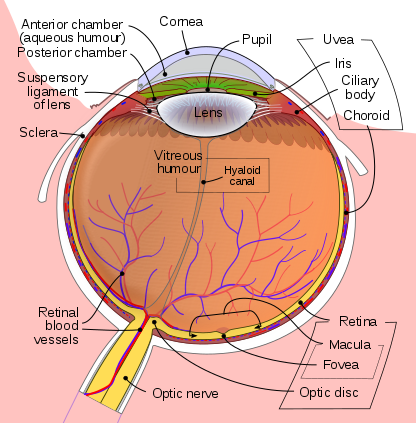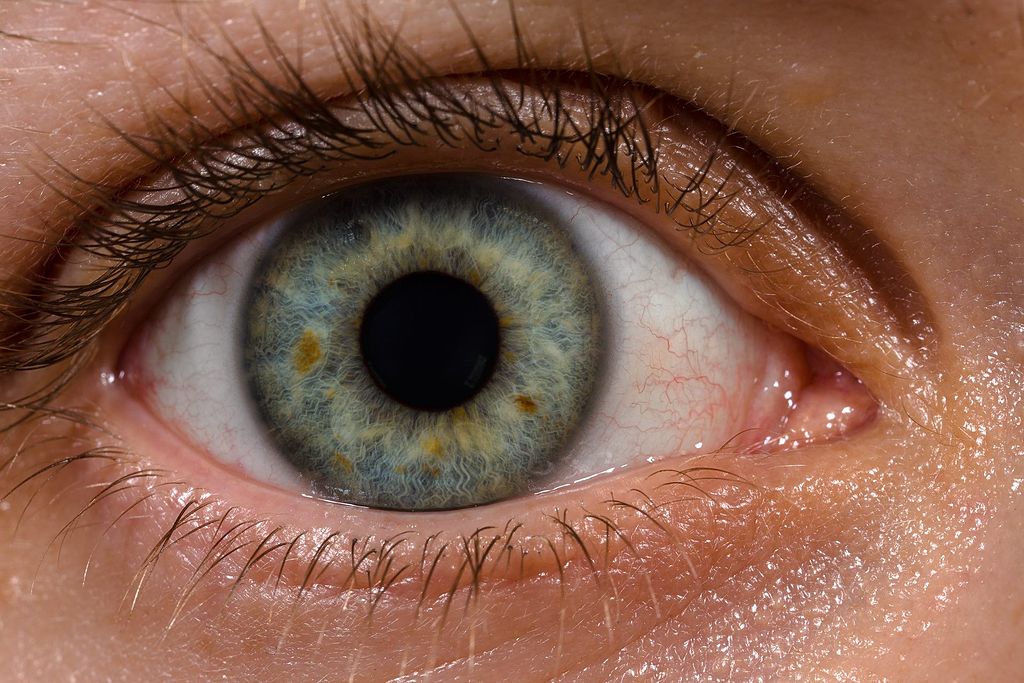When we hear the word cancer, we don’t typically think of a type of cancer that threatens to take away one of the most precious gifts of life. This gift that so many of us take for granted is our sight. Unfortunately, there are people around the world each year who are faced with the horrible news that they have cancer in their eye. When people hear this diagnosis, they can’t help but feel an immediate dread for what is to come. These individuals are left wondering what kind of hope there is for their survival. Fortunately, there is a large amount of research being done on uveal melanoma in order to restore hope to individuals who suffer from this often overlooked type of cancer.
What is Uveal Melanoma?
Uveal melanoma is the most common type of cancer that develops in the eye. Each year, between 4 and 7 in a million people are diagnosed with uveal melanoma. This type of cancer typically forms in the melanocytes of the choroid, ciliary body, or the iris, and can lead to severe loss of vision. Uveal melanoma becomes metastatic in around 50% of individuals diagnosed with this type of cancer, with the cancer typically spreading to the liver. Individuals with metastatic uveal melanoma typically pass away less than a year after their diagnoses since no treatments have been found to effectively treat this cancer once it has spread. Unfortunately, little progress has been made in increasing the survival rate of individuals with uveal melanoma in the past 50 years. As a result, there is a dire need to design better treatments for this type of cancer and bring hope to individuals in the face of a terrifying diagnosis.

Figure 1. Diagram of a human eye indicating the structures of the iris, ciliary body, and choroid, which are the sites of development of uveal melanoma. Authors: Rhcastilhos. And Jmarchn. Source: Schematic diagram of the human eye en.svg from Wikimedia Commons. License: CC BY-SA 3.0
What Causes Uveal Melanoma?
Uveal melanoma is typically caused by mutations to genes that encode proteins involved in the cell cycle and apoptosis. Genes that are often mutated in individuals with uveal melanoma include GNAQ and GNA11, which are both involved in making the protein GNAQ. This mutant protein leads to increased signalling in the RAF/MEK/ERK pathway in the cell cycle, which causes the retinoblastoma tumour suppressor gene to become inactive in cancerous cells. As a result, cancer cells that should normally be stopped at the G1-S checkpoint by the products of the retinoblastoma tumour suppressor gene are allowed to continue through the cell cycle and contribute to the growth of a tumour. Other mutant genes can lead to the inhibition of the p53 pathway to prevent cancerous cells from undergoing apoptosis. As a result, cancerous cells are able to survive and continue to divide to form tumours.
What are Screening Techniques for Uveal Melanoma?
There are many methods that can be used to screen for uveal melanoma. The presence of lesions in the eye can often serve as a precursor to the development of uveal melanoma. This is why it is so important to get all of those pesky tests done from your optometrist! While it may be unpleasant having an optometrist shine a light in your eyes, this test could allow them to view lesions in your eye and refer you to an ophthalmologist. This could potentially save your life. Ophthalmologists use techniques such as fluorescein angiography to check for increased vasculature and ultrasonography to measure the size of a tumour in order to determine if an eye tumour is uveal melanoma. In order to determine if metastasis of uveal melanoma has occurred, physicians typically test liver function and use imaging techniques such as computed tomography and magnetic resonance imaging.
What are Treatment Options for Uveal Melanoma?
By this point, you may be wondering what can be done to help people who have uveal melanoma. Fortunately, there are several treatment options for this type of cancer. One frequently used treatment is surgical removal of the affected eye. During removal, individuals often receive an implant in place of their eye in order for them to maintain as normal of an appearance as possible. As you can imagine, this is a very difficult treatment option for many people. Most people are devastated by the idea of losing their eye. As a result, there are other treatments that are used with the hopes of saving vision. Two of these treatments are plaque brachytherapy and proton-beam radiotherapy, both of which involve radiation. Unfortunately, there are risks associated with these techniques, such as cataract development and loss of vision a few years after treatment.
Another treatment option is transpupillary thermotherapy. In this treatment, heat is applied to tumours in order to destroy them. This treatment is typically safer than other options, with potential side effects of scotomas instead of total loss of vision, but tumours often develop in the eye again after this treatment due to the heat failing to destroy all of the cancerous cells in the eye. As a result, transpupillary thermotherapy is often used with other treatments in order to have a greater long-term success in stopping the development of uveal melanomas. Chemotherapy is often used with the previously mentioned treatments as well. Unfortunately, there are still no successful treatments for metastatic uveal melanoma. Researchers remain hopeful that knowledge gained by understanding the genetic causes of uveal melanoma will lead to the development of more effective therapies in the future.
Many studies have been conducted to find new treatments for uveal melanoma. Researchers have successfully identified specific gene mutations that are involved in the development of uveal melanoma, which could potentially be used to design new treatments for this type of cancer in the future. However, there is still plenty of research that needs to be done in order to increase the survival rate of this deadly cancer. Hopefully in the near future, uveal melanoma research will become more popular in order to design more successful treatments for individuals who have metastatic uveal melanoma along with treatment options that focus on saving vision. This would make a world of difference to people who have to deal with the devastating reality of losing their vision and maybe even their lives as a result of this frightening form of cancer.


Recent Comments